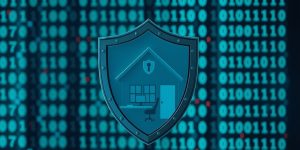In today’s digital age, securing your business website from cyber attacks is of utmost importance. Cyber attacks can lead to significant financial losses, damage to your brand reputation, and loss of customer trust. To protect your website and sensitive data, it is crucial to implement essential security measures. This article will outline the key steps you need to take to secure your business website from cyber attacks.
Key Takeaways
- Understand common cyber attacks and the motivations behind them
- Implement strong authentication measures such as password best practices, multi-factor authentication, and biometric authentication
- Secure your network infrastructure with firewall configuration, intrusion detection and prevention systems, and regular network vulnerability assessments
- Keep your software and systems up to date by prioritizing patch management and updating operating systems and applications
- Educate your employees on cybersecurity through security awareness programs, training on phishing and social engineering, and promoting a security-conscious culture
Understanding the Threat Landscape
Common Cyber Attacks
Cyber attacks are a constant threat to businesses of all sizes. Hackers and malicious actors are constantly evolving their techniques to exploit vulnerabilities in websites and gain unauthorized access to sensitive information. It is crucial for businesses to understand the different types of cyber attacks they may face in order to effectively protect their website and data.
One common type of cyber attack is phishing, where attackers use deceptive emails or websites to trick users into revealing sensitive information such as passwords or credit card details. Malware attacks are another common threat, where malicious software is installed on a user’s device without their knowledge, allowing attackers to steal data or gain control of the device.
To defend against these attacks, businesses should implement strong security measures such as firewalls, intrusion detection and prevention systems, and regular network vulnerability assessments. These measures help to detect and prevent unauthorized access to the website and protect against common cyber attack techniques.
In addition, businesses should educate their employees about the risks of cyber attacks and provide training on phishing and social engineering techniques. By creating a security-conscious culture and promoting awareness of these threats, businesses can reduce the likelihood of falling victim to cyber attacks.
Motivations Behind Cyber Attacks
Cyber attacks can be motivated by various factors, including financial gain, political motives, revenge, or simply the thrill of causing disruption. Understanding the motivations behind cyber attacks is crucial for businesses to develop effective security strategies.
Financial gain is one of the primary motivations behind cyber attacks. Attackers may target businesses to steal sensitive financial information, such as credit card details or bank account credentials, which can be sold on the dark web for profit.
Political motives can also drive cyber attacks. Nation-states or hacktivist groups may target businesses to gain access to valuable intellectual property, disrupt critical infrastructure, or advance their political agenda.
Revenge is another motivation behind cyber attacks. Disgruntled employees or individuals with a personal vendetta against a business may seek to cause harm by launching cyber attacks.
It is important for businesses to recognize these motivations and take appropriate measures to protect their websites and sensitive data.
Impact of Cyber Attacks on Businesses
Cyber attacks can have devastating consequences for businesses. They can result in financial losses, damage to reputation, and even legal liabilities. According to a study by the Ponemon Institute, the average cost of a data breach for a business in 2020 was $3.86 million. This includes the costs of investigation, remediation, and customer notification.
In addition to the financial impact, cyber attacks can also disrupt business operations. Downtime caused by an attack can lead to lost productivity and missed opportunities. Customers may lose trust in the business and take their business elsewhere.
To mitigate the impact of cyber attacks, businesses need to prioritize cybersecurity measures. This includes implementing strong authentication measures, securing network infrastructure, keeping software and systems up to date, educating employees on cybersecurity, implementing secure coding practices, and establishing monitoring and incident response processes.
Key takeaway: Protecting your business from cyber attacks is not just a matter of avoiding financial losses. It is also about safeguarding your reputation, maintaining customer trust, and ensuring uninterrupted business operations.
Implementing Strong Authentication Measures
Password Best Practices
When it comes to password security, following best practices is crucial to protect your business website from cyber attacks. Here are some important guidelines to keep in mind:
-
Use strong and unique passwords: Avoid using common passwords or easily guessable combinations. Instead, create complex passwords that include a mix of uppercase and lowercase letters, numbers, and special characters.
-
Enable password complexity requirements: Implement a policy that enforces password complexity, such as a minimum length and the inclusion of different character types.
-
Regularly update passwords: Encourage users to change their passwords periodically, especially after any security incidents or breaches.
Tip: Consider using a password manager to securely store and generate strong passwords.
-
Implement two-factor authentication (2FA): Adding an extra layer of security by requiring users to provide a second form of verification, such as a code sent to their mobile device, can significantly enhance password security.
-
Educate employees on password security: Provide training on the importance of strong passwords, the risks of password reuse, and the proper handling of login credentials.
Remember, implementing these password best practices is an essential step in safeguarding your business website against cyber threats.
Multi-Factor Authentication
Multi-Factor Authentication (MFA) is a crucial security measure that adds an extra layer of protection to your business website. By requiring users to provide multiple forms of identification, MFA significantly reduces the risk of unauthorized access. Passwords alone are no longer sufficient to defend against sophisticated cyber attacks. Implementing MFA helps mitigate the risk of credential theft and account compromise.
To implement MFA, consider the following steps:
- Choose the right factors: Select a combination of factors such as something you know (password), something you have (smartphone or token), and something you are (biometric data).
- Enforce MFA for critical accounts: Require MFA for privileged accounts, administrative roles, and any accounts with access to sensitive data.
- Educate users: Provide clear instructions on how to set up and use MFA, emphasizing the importance of protecting their accounts.
Tip: Regularly review and update your MFA policies to ensure they align with evolving security best practices.
Biometric Authentication
Biometric authentication is a highly secure method of verifying a user’s identity based on unique physical or behavioral characteristics. By using biometric data such as fingerprints, iris scans, or facial recognition, businesses can ensure that only authorized individuals have access to sensitive information.
Implementing biometric authentication involves several steps:
- Enrollment: Users need to register their biometric data with the system. This typically involves capturing the biometric information using specialized devices.
- Template Creation: The system converts the captured biometric data into a unique template that can be used for future authentication.
- Matching: During authentication, the system compares the user’s biometric data with the stored template to determine if there is a match.
Tip: Biometric authentication provides a high level of security, as it is difficult to replicate or forge someone’s unique biometric characteristics.
While biometric authentication offers strong security, it is important to consider potential limitations such as false positives or false negatives. Regular testing and monitoring of the biometric system can help identify and address any issues that may arise.
Securing Network Infrastructure
Firewall Configuration
Firewall configuration is a crucial step in securing your business website from cyber attacks. Firewalls act as a barrier between your internal network and the external internet, monitoring and controlling incoming and outgoing network traffic. By properly configuring your firewall, you can restrict access to your network, block malicious traffic, and prevent unauthorized access to sensitive data.
Implementing a firewall involves several key steps:
- Defining access rules: Determine which types of traffic are allowed or denied based on specific criteria such as IP addresses, ports, and protocols.
- Creating a DMZ: Establish a demilitarized zone (DMZ) to separate your public-facing servers from your internal network, providing an additional layer of protection.
- Regularly updating firewall rules: Stay up to date with the latest threats and vulnerabilities by regularly reviewing and updating your firewall rules.
Tip: Consider using a next-generation firewall that offers advanced features such as intrusion prevention, application control, and deep packet inspection.
Intrusion Detection and Prevention Systems
Intrusion Detection and Prevention Systems (IDPS) play a crucial role in safeguarding your network infrastructure from cyber threats. These systems monitor network traffic and analyze it for any suspicious activity or known attack patterns. By detecting and preventing unauthorized access attempts, IDPS can help mitigate the risk of successful cyber attacks.
Implementing an IDPS involves several key steps:
- Selecting the right IDPS solution: There are various IDPS solutions available in the market, each with its own set of features and capabilities. It’s important to evaluate your organization’s specific needs and choose a solution that aligns with your security requirements.
- Configuring the IDPS: Once you have selected an IDPS solution, it’s essential to properly configure it to effectively monitor and protect your network. This includes defining rules and policies that specify what types of activities should be considered suspicious and how the system should respond.
- Regular updates and maintenance: IDPS solutions should be regularly updated with the latest threat intelligence and security patches to ensure they can effectively detect and prevent new and emerging threats.
Tip: Regularly review and fine-tune the rules and policies of your IDPS to optimize its performance and accuracy.
By implementing robust IDPS measures, you can enhance the security of your network infrastructure and reduce the risk of successful cyber attacks.
Regular Network Vulnerability Assessments
Regular network vulnerability assessments are critical for maintaining the security of your business website. These assessments involve systematically scanning your network infrastructure to identify any vulnerabilities that could be exploited by attackers. By conducting these assessments on a regular basis, you can stay ahead of potential threats and take proactive measures to address any weaknesses.
To ensure the effectiveness of your vulnerability assessments, consider the following:
- Use automated tools: Utilize specialized software or services that can scan your network for vulnerabilities. These tools can help identify common security issues and provide recommendations for remediation.
- Perform manual testing: In addition to automated tools, conduct manual testing to identify vulnerabilities that may not be detected by automated scans. This can include reviewing network configurations, analyzing logs, and performing penetration testing.
- Document and prioritize findings: Keep a record of all identified vulnerabilities and prioritize them based on their severity. This will help you allocate resources effectively and address the most critical issues first.
By regularly assessing the vulnerabilities in your network infrastructure, you can proactively identify and address potential security risks, ensuring the ongoing protection of your business website.
Keeping Software and Systems Up to Date
Importance of Patch Management
Patch management is a critical aspect of maintaining the security of your business website. Regularly updating your software and systems with the latest patches is essential to addressing vulnerabilities and protecting against known exploits. By keeping your software up to date, you can minimize the risk of cyber attacks and prevent unauthorized access to your website.
Implementing an effective patch management process involves several steps:
- Identify the software and systems that require patching.
- Prioritize patches based on their criticality and potential impact on your website’s security.
- Test patches in a controlled environment before deploying them to production.
- Schedule regular patching cycles to ensure timely updates.
Tip: Automating the patch management process can help streamline the task and ensure consistent updates across your network.
By prioritizing patch management and following best practices, you can significantly enhance the security of your business website.
Updating Operating Systems and Applications
Updating operating systems and applications is a crucial step in maintaining the security of your business website. Regular updates ensure that any known vulnerabilities are patched, reducing the risk of exploitation by cyber attackers.
It is important to prioritize updates based on the severity of the vulnerabilities and the criticality of the systems and applications. Patch management tools can help automate the process and ensure that updates are applied in a timely manner.
To stay organized and keep track of updates, consider using a table to present the information. The table can include columns for the system or application, the version, the release date of the update, and the severity level of the vulnerability addressed.
Additionally, here are some best practices to follow when updating operating systems and applications:
- Backup your data before applying updates to minimize the risk of data loss in case of any issues.
- Test updates in a controlled environment before deploying them to production systems.
- Monitor vendor notifications for any security advisories or patches related to the systems and applications you use.
Remember, keeping your operating systems and applications up to date is an ongoing process that requires regular attention to ensure the security of your business website.
Managing Third-Party Software
When it comes to managing third-party software, it is crucial to prioritize security to minimize the risk of cyber attacks. Here are some important steps to consider:
-
Vendor Evaluation: Before integrating any third-party software into your business website, thoroughly evaluate the vendor’s security practices and track record. Look for vendors that prioritize security and regularly release updates and patches.
-
Regular Updates: Keep all third-party software up to date by installing the latest patches and updates. Outdated software can have vulnerabilities that hackers can exploit.
-
Monitoring and Auditing: Implement a system to monitor and audit the third-party software used on your website. This will help identify any potential security issues and ensure that the software is being used securely.
Tip: Consider using a software management tool that can automate the process of updating and monitoring third-party software.
By following these steps, you can reduce the risk of cyber attacks associated with third-party software.
Educating Employees on Cybersecurity
Creating a Security Awareness Program
Implementing a security awareness program is crucial for ensuring that employees are knowledgeable about cybersecurity best practices and are able to identify and respond to potential threats. Here are some key steps to consider when creating a security awareness program:
-
Define the objectives: Clearly outline the goals and objectives of the program, such as increasing employee awareness of common cyber threats and promoting a security-conscious culture.
-
Develop engaging training materials: Use a variety of formats, such as videos, interactive modules, and quizzes, to keep employees engaged and facilitate learning.
-
Regularly update the content: Cyber threats evolve rapidly, so it’s important to keep the training materials up to date with the latest trends and techniques used by attackers.
Tip: Consider using real-life examples and scenarios to make the training more relatable and practical.
-
Promote active participation: Encourage employees to actively participate in the program by providing feedback, asking questions, and sharing their own experiences and insights.
-
Measure effectiveness: Regularly assess the effectiveness of the program through surveys, quizzes, and simulated phishing exercises to identify areas for improvement.
-
Reward and recognize: Recognize and reward employees who demonstrate good cybersecurity practices and actively contribute to the security of the organization.
By implementing a comprehensive security awareness program, businesses can significantly reduce the risk of successful cyber attacks and create a culture of security awareness and vigilance.
Training on Phishing and Social Engineering
Training employees on phishing and social engineering is crucial for protecting your business website from cyber attacks. Phishing is a technique used by attackers to trick individuals into revealing sensitive information, such as passwords or credit card numbers, by posing as a trustworthy entity. Social engineering, on the other hand, involves manipulating individuals into divulging confidential information or performing actions that may compromise security.
To effectively train employees on these topics, consider the following:
- Simulated phishing attacks: Conduct regular simulated phishing attacks to test employees’ awareness and response to phishing attempts. This helps identify areas for improvement and reinforces the importance of vigilance.
- Educational materials: Provide educational materials, such as videos, articles, and interactive modules, that explain common phishing and social engineering techniques. These resources should emphasize the red flags to look out for and best practices for avoiding falling victim to these attacks.
- Reporting procedures: Establish clear procedures for reporting suspected phishing attempts or social engineering incidents. Encourage employees to report any suspicious emails, messages, or phone calls they receive to the appropriate IT or security personnel.
Remember, training is an ongoing process. Regularly revisit and update your training materials to stay current with the evolving tactics used by cyber attackers.
Promoting a Security-Conscious Culture
Creating a security-conscious culture within your organization is crucial for maintaining the overall cybersecurity of your business website. Employee awareness and engagement are key factors in preventing cyber attacks and minimizing the impact of any potential breaches.
To promote a security-conscious culture, consider the following:
- Regular training sessions on cybersecurity best practices, including password hygiene, safe browsing, and email security.
- Encourage reporting of any suspicious activities or potential security incidents to the appropriate IT personnel.
- Establish clear security policies and guidelines that outline the expected behavior and responsibilities of employees regarding cybersecurity.
- Reward and recognize employees who actively contribute to maintaining a secure environment.
Tip: Foster an environment where employees feel comfortable asking questions and seeking guidance on cybersecurity matters. This will help create a proactive and vigilant workforce that actively contributes to the overall security of your business website.
Implementing Secure Coding Practices
Input Validation and Output Encoding
Input validation and output encoding are crucial steps in ensuring the security of your business website. Input validation involves checking user input to ensure it meets the expected format and does not contain any malicious code. This helps prevent SQL injection, cross-site scripting (XSS), and other common web application vulnerabilities.
Output encoding is the process of converting special characters in user-generated content to their corresponding HTML entities. This prevents cross-site scripting (XSS) attacks by ensuring that user input is treated as plain text and not interpreted as code by the browser.
To effectively implement input validation and output encoding, consider the following:
- Use a whitelist approach to validate user input, allowing only specific characters or patterns that are necessary for the application.
- Implement server-side validation to complement client-side validation and provide an additional layer of security.
- Regularly update and maintain a list of safe HTML tags and attributes to allow for proper output encoding.
Tip: Always validate and sanitize user input before using it in any database queries or displaying it on your website. This helps prevent potential security vulnerabilities and protects your website from attacks.
Avoiding Common Web Application Vulnerabilities
Web application vulnerabilities can leave your business website exposed to cyber attacks. It is crucial to implement secure coding practices to minimize the risk of these vulnerabilities. Input validation and output encoding are essential techniques to prevent common web application vulnerabilities such as SQL injection and cross-site scripting (XSS). By validating and sanitizing user input, you can ensure that only expected and safe data is processed by your application.
Regular code reviews and testing are also important to identify and fix any vulnerabilities in your web application. This includes reviewing the code for potential security flaws and conducting thorough testing to ensure the application behaves as expected and is resistant to attacks.
To further enhance the security of your web application, consider implementing a web application firewall. This can help detect and block malicious traffic before it reaches your application, providing an additional layer of protection.
By following these practices, you can significantly reduce the risk of web application vulnerabilities and better protect your business website from cyber attacks.
Regular Code Reviews and Testing
Regular code reviews and testing are crucial steps in ensuring the security of your business website. Code reviews involve a thorough examination of the codebase to identify any vulnerabilities or weaknesses that could be exploited by attackers. This process helps to catch coding errors, logic flaws, and potential security issues before they become a problem.
Testing is equally important as it allows you to validate the functionality and security of your website. By conducting penetration testing and vulnerability scanning, you can identify and address any weaknesses or vulnerabilities that may exist in your website’s code or infrastructure.
To effectively implement regular code reviews and testing, consider the following:
- Establish a code review process that involves multiple developers reviewing each other’s code to ensure quality and security.
- Use automated testing tools to streamline the testing process and identify common vulnerabilities.
- Conduct regular security audits to assess the overall security posture of your website.
Remember, regular code reviews and testing are essential to proactively identify and address security issues, minimizing the risk of cyber attacks.
Monitoring and Incident Response
Implementing Security Information and Event Management (SIEM)
Implementing Security Information and Event Management (SIEM) is crucial for businesses to effectively monitor and respond to security incidents. SIEM solutions provide real-time analysis of security alerts generated by network devices, systems, and applications. By centralizing and correlating this data, organizations can gain valuable insights into potential threats and take proactive measures to mitigate risks.
Benefits of Implementing SIEM:
- Improved threat detection and response capabilities
- Enhanced visibility into network activities
- Simplified compliance management
- Streamlined incident investigation and reporting
Best Practices for Implementing SIEM:
- Define clear objectives and requirements for the SIEM implementation.
- Ensure proper integration with existing security tools and systems.
- Regularly update and fine-tune SIEM rules and policies.
- Conduct regular audits and reviews of SIEM logs and reports.
- Train security personnel on SIEM operation and analysis.
Tip: Regularly review and update the SIEM configuration to align with evolving security threats and business needs.
Establishing an Incident Response Plan
An incident response plan is a crucial component of a comprehensive cybersecurity strategy. It outlines the steps and procedures that should be followed in the event of a cyber attack or security incident. Timely and effective incident response can minimize the damage caused by an attack and reduce the downtime of your business.
Implementing an incident response plan involves the following steps:
- Preparation: Develop a plan that includes roles and responsibilities, communication channels, and escalation procedures. Identify the key personnel who will be involved in the incident response process.
- Detection and Analysis: Establish mechanisms to detect and analyze security incidents. This can include monitoring tools, intrusion detection systems, and log analysis.
- Containment and Eradication: Once an incident is detected, take immediate action to contain the attack and prevent further damage. This may involve isolating affected systems, removing malware, and patching vulnerabilities.
- Recovery and Restoration: After the incident has been contained, focus on restoring normal operations. This may include restoring data from backups, rebuilding systems, and implementing additional security measures.
- Post-Incident Review: Conduct a thorough review of the incident response process to identify areas for improvement. Document lessons learned and update the incident response plan accordingly.
Tip: Regularly test and update your incident response plan to ensure its effectiveness in addressing evolving cyber threats.
Continuous Monitoring and Log Analysis
Continuous monitoring and log analysis are crucial components of a robust cybersecurity strategy. Monitoring the network and analyzing logs can help identify suspicious activities and potential security breaches in real-time. By monitoring network traffic and analyzing logs, businesses can detect and respond to security incidents promptly, minimizing the impact of cyber attacks.
To effectively implement continuous monitoring and log analysis, businesses can:
- Deploy a Security Information and Event Management (SIEM) system that collects and analyzes logs from various sources, providing a centralized view of the network’s security posture.
- Establish an incident response plan that outlines the steps to be taken in the event of a security incident, including notification, containment, investigation, and remediation.
- Regularly review and analyze log data to identify anomalies and patterns that may indicate a security breach.
Tip: It is important to ensure that log data is securely stored and protected from unauthorized access or tampering.
Conclusion
In conclusion, securing your business website from cyber attacks is essential in today’s digital landscape. By following the essential steps outlined in this article, such as implementing strong passwords, regularly updating software, and conducting regular security audits, you can significantly reduce the risk of a cyber attack. Remember, prevention is better than cure, and investing in website security is an investment in the long-term success and reputation of your business. Stay vigilant, stay informed, and stay secure!
Frequently Asked Questions
What are common cyber attacks?
Common cyber attacks include phishing, malware, ransomware, DDoS attacks, and SQL injection.
Why do cyber attacks happen?
Cyber attacks can be motivated by financial gain, political motives, espionage, or simply the desire to cause disruption.
What is the impact of cyber attacks on businesses?
Cyber attacks can lead to financial loss, reputational damage, legal consequences, and disruption of business operations.
How can I create strong passwords?
Create long and complex passwords, avoid using common words or personal information, and use a password manager.
What is multi-factor authentication?
Multi-factor authentication is a security measure that requires users to provide two or more forms of identification, such as a password and a fingerprint.
Why is patch management important?
Patch management is important to ensure that software and systems are up to date with the latest security patches, which helps to prevent vulnerabilities from being exploited.







